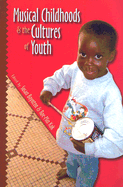Book Review: Musical Childhoods & the Cultures of Youth
edited by Susan Boynton and Roe-Min Kok
Middletown, CT: Wesleyan University Press, 2006
Parts read: Preface, Ch. 4 to Ch. 9, and Afterword
Parts skimmed: Ch. 1 to Ch. 3 and Ch. 10
See content page here.
This book review does not intend to be in the style of a formal review as in academic journals. It is, instead, an exploration of ideas, a field for ideas to sort and sediment, and a place to pose questions. For a formal review, see Barry Cooper's essay on Music and Letters.
----------
I was initially attracted to this book by Ch. 5, Roe-Min Kok's Music for a Postcolonial Child: Theorizing Malaysian Memories. As a western music learner from Hong Kong, I struggle to give a statement - not even a provisional one - about my culture identity, and how I appropriate my views of nation and culture, views that seems to come directly from my mind than by reason. (Resemblances of Bourdieu's habitus?) This book serves as a great introduction to topics in children studies. My greatest gain after reading is the heightened awareness of the mediated nature of discourse, especially one between children and adults.
Ch. 5 and Ch. 6 most explicitly grapple with the matter of the mediated nature of discourse. Roe-Min Kok's essay is a deconstruction of her identity as a Malaysian professor of western music in Canada, and then a reconstruction of various powers around her youth that makes her the person she is. In her words, she "theorizes from [her] personal loci" and attempts to "foreground and interrogate forces that have shaped [her] identity in order to facilitate reconciliation of the fragments created by the dominant discourse of [her] early music education." (90) This is an autobiography of her youth, however not one that only recounts her indelible memories of youth, but goes beyond and questions her post-colonial experience. That includes the western music education she received on an eastern soil, and the ABRSM music exams she endured. She put her story as a post-colonial discourse, and ascribes her post-childhood character to values planted by the British colonization of Malaysia. In Ch. 6, Patricia Tang succinctly points out that Senegalese griots attempt to shape their identity through the construction of their childhood stories in front of western scholars. Both essays seem to suggest the death of the fatal "A-word" authenticity, not to discredit the informant, but to acknowledge that discourses are always mediated, and to investigate the mediation would be a fruitful process in what we call critical studies.
Ch. 8 and Ch. 9 testify that some pieces of music do not bear the same effects as their composers intend them to. Ch. 8 reports on the living Germans' memories of political-imbued folk songs of the 50s. Ch. 9 comes to the conclusion that some music education policies in Meiji era spread mostly western musical ideas, despite having an aim to evoke Japanese-ness through music.
All four essays above started from the viewpoint of the adult. In other words, the adult analyses their childhood and provides a discourse. Ch. 5 and ch. 10, interestingly, try to invert the balance. They attempt to analyze from a childhood perspective. Steven Heubner used Piaget's childhood development paradigm to analyze the plot and music of Ravel's L'Enfant et les sortilege. His ingenious imagination connects childhood behavior with modernist aesthetics, something, This relevant and eccentric point of view justifies the opera's presence in the early 20th century. (Of course, the childhood paradigm is invented by an adult, but my point is that the author theorizes as if he/she is a child.) Ch. 10 describes a phenomenon in a Jewish summer camp that an invented ritual-musical practice of the youth shapes their future modes of devotion.
While this book gives a satisfying experience across different cultures, I find Ch. 7 an absurd change of perspective of the book. The author highlights the connection between the three informants - how genius female P'ansori performs come of age - very much her rationale in selecting them. She gives a lot of background information on how their lives are shaped by society, but does not seem to be interested in the discourse of the informants. The informants provide the story, and the author treats it, at most times, as a transparent and True story - quite a different approach from the rest of the essays.
Personally, Ch. 5 remains the most provocative essay. I do not totally agree on Roe-min Kok's post-colonial stance. I was tempted to say that Kok's discourse put the colonized as the victimized, but she doesn't intend to do that. She stopped at interrogating the forces that shaped her youth. In theorizing my coming-of-age, which is one of my goals, I would go further in the critical analysis, and give an answer - a bold albeit imperfect one - to my mission as a product of those powers that shaped me. I am a power, after all.

No comments:
Post a Comment